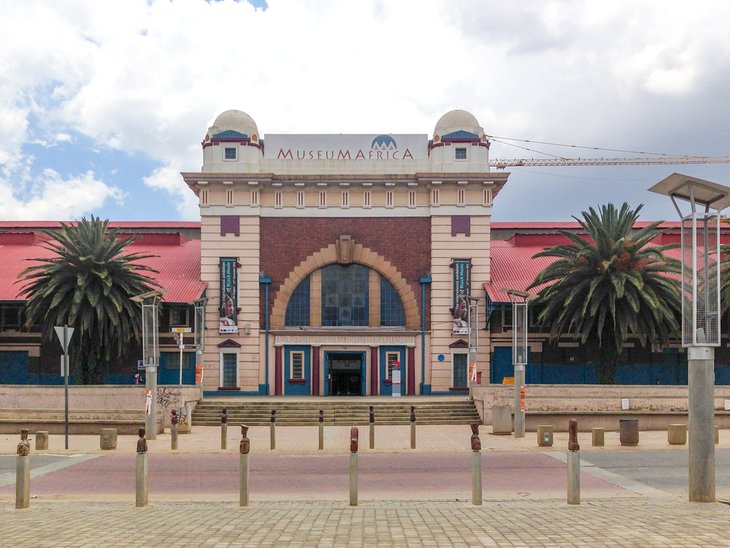Getting My Johannesburg North Attractions To Work
Getting My Johannesburg North Attractions To Work
Blog Article
Some Of Johannesburg North Attractions
Table of ContentsThe Basic Principles Of Johannesburg North Attractions Johannesburg North Attractions Fundamentals ExplainedSome Ideas on Johannesburg North Attractions You Should KnowJohannesburg North Attractions Things To Know Before You Get ThisSome Known Details About Johannesburg North Attractions 7 Easy Facts About Johannesburg North Attractions ShownThe Greatest Guide To Johannesburg North Attractions
You need to keep safety and security in mind and travelers need to stay alert at all times when in unfamiliar environments. Speak to the residents when you remain in community to discover the location you are remaining in. Johannesburg North attractions. When on the street (this does not relate to buying malls and other safe environments) best general advice is to attempt your best to resemble a regional and to avoid displaying any type of form of wide range
Some Known Facts About Johannesburg North Attractions.
Professor Revil Mason O. J. (Thomson, 1946) explored the Witwatersrand's pre-colonial background. His historical work took off the 'em pty land' misconception, according to which the region was without human habitation prior to the arrival of European settlers. In his publications Prehistory of the Transvaal: A Document of Human Task (1962) and Origins of Black Individuals of Johannesburg and the Southern Western Central Transvaal Advertisement 3501880 (1986 ), Professor Mason demonstrated the extent of social and financial growth in the location prior to Europeans established foot right here.

What Does Johannesburg North Attractions Mean?
In 1878, David Wardrop discovered gold in quartz capillaries at Zwartkop, north of Krugersdorp. In 1881, Stephanus Minnaar came across gold on the ranch Kromdraai, near the Cradle of Humankind.
In March 1886, a protrusion (soon to be called the Key Reef) was located, rather fortuitously, on Gerhardus Oosthuizen's farm Langlaagte. Some claim that the Lancastrian coal miner George Walker discovered this reef. An additional itinerant English prospector, George Harrison (that had previously worked in Australian mines) acquired a prospecting licence in respect of Langlaagte in May 1886.
He chose to carry on in a quest for greener fields, and disposed of his Langlaagte insurance claim for the handsome amount of 10. Alas: below lay the wealthiest goldfield ever before found. The exploration of this rich auriferous reef prompted a gold thrill that signified completion of bucolic tranquillity in the southern Transvaal.
It would, within six years, come to be the largest town in southern Africa. Within a decade, it would make the Z. A. R. till then an anarchical and bankrupt little state the most affluent nation in Africa. By the millenium, the Z. A. R. was to exceed Russia, Australia and the USA of America to come to be the world's leading gold manufacturer, creating greater than a quarter of the world's gold.
The 9-Minute Rule for Johannesburg North Attractions
It was known as Ferreira's Camp, named after Colonel Ignatius Ferreira. He was a Boer adventurer upon whom the British authorities had actually presented the status of Friend of the Many Identified Order of St Michael and St George (entitling him to the post-nominal letters C. M. G.) in appreciation for his function in the war that had deposed the Pedi king Sekhukhune in 1879.
Quickly the camp was including camping tents and wagons as beginners showed up daily from far and wide. By September 1886, some 400 individuals stayed in Ferreira's Camp, which quickly boasted upreared iron and timber structures. Two various other camps were established: Meyer's Camp on the farm Doornfontein, and Paarl Camp. The latter was nicknamed Afrikander their explanation Camp; lots of people from the Cape Swarm settled there.

Unknown Facts About Johannesburg North Attractions
This name acquired currency by word of mouth, such that the State Assistant verified the name to the Mining Commissioner on 9 October 1886. Stands in the village were auctioned on 8 December 1886. While some stands were cost 10, others were knocked down for as low as sixpence.
2 years later on, these erven were to change hands for as long as 750 each. The tented camps decreased as a dorp of corrugated iron structures created and expanded north of the mines located along the Main Reef Roadway. Areas such as Jeppe's Community (where working-class immigrants erected their dwellings) and Doornfontein (where the upscale new 'Randlords' began to build their extravagant residences) were soon included in the ever-expanding map of the town.
The Only Guide for Johannesburg North Attractions
Apart from the road names, there were no signs of Johannesburg being positioned in a Dutch-speaking nation., almost everyone spoke English and even the Federal government slaves resolved one in English, unless they were first addressed in the Taal (or Reduced Dutch)'.
As such, Britain had a rate of interest in making sure ideal conditions for gold production on the Witwatersrand, and that the gold was exported to London rather than Berlin a vital rendered all the a lot more clamant by the Z. A. R - Johannesburg North attractions.'s enhancing toenadering with Germany. Mine owners got on a clash with President Kruger, whose plan of monopolistic giving ins (usually given to his cronies) stopped mining firms from acquiring supplies of products (specifically dynamite) and work by themselves, less costly terms
Johannesburg North Attractions - An Overview
In 1890, the Volksraad had restricted the franchise business to white men that had stayed in the Z. A. R. for fourteen years or longer, therefore disqualifying a lot of the immigrants (who occurred to be Clicking Here the significant contributors to the fiscus). However, anxiety for the vote was a simple pretext for advertising a various agenda; most uitlanders concerned themselves as short-lived site visitors and had no intention of staying in the Z.
Report this page